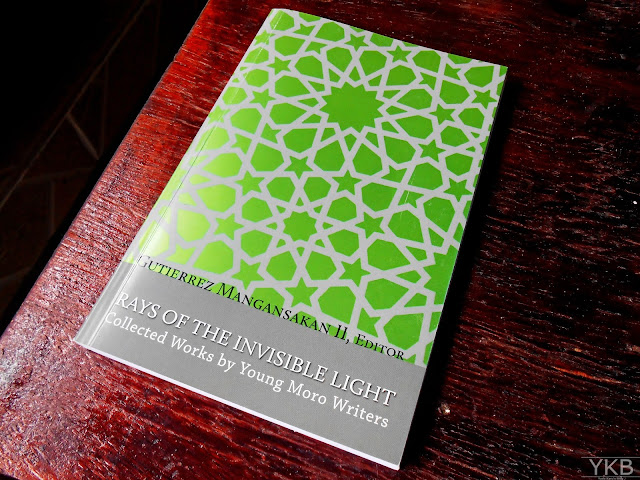Rays of the Invisible Light: A new book about the Bangsamoro
“It took eight years for this anthology to incubate,” says Gutierrez “Teng” Mangansakan II, the Editor and one of the writers of the book. “During these long years, a lot of events have reshaped and changed the course of history.” Indeed, a lot has happened in the Bangsamoro history. Those incidents happened in the past eight years help generate ideas for the Moro writers. The young Moro writers want to tell stories about identity, self-determination, freedom, peace, love, faith and the like.
I feel blessed because I am one of those few people who first read the book before it was released. That time I was excited to read stories written by Moro writers who came from different backgrounds but with the same intention of uplifting the pride of the Bangsamoro. My expectation did not fail me. The book presents stories that the Moro and Non-Moro people could relate to.
“The voices of young Moro Writers in this anthology are like rays of an invisible light passing through a prism forged from memory and struggle, longing and conviction, refracting a kaleidoscope of dazzling colors, sensations and experiences. Each word written is an expression of identity, home, culture, faith as well as skepticism, resonating from the depths of the Moro soul,” says Teng.
The book features the works of Pearlsha Abubakar, Reinna Bermudez, Arifah Macacua Jamil, Janesa Mariam Ladjiman, Loren Hallilah Lao, Diandra-Ditma Macarambon, Mohammad Nassefh Macla, Gutierrez Mangansakan II, Kristine Ong Muslim, Datu Shariff Pendatun III, Sahara Alia Silongan, and Zakiyyah Sinarimbo. Unlike the first book – Children of the Ever Changing Moon: Essays of young Moro Writers, which contains essays, this new Moro anthology presents poems, short fiction, essays and an excerpt of a screenplay.
The stories that the book presented would make an indelible mark in one’s memory. It would make you scout your own memories because you want to probe your own identity. You could relate to it in the sense that their stories connect in some part of yourself. Whether you are a Moro or not you can relate to it because of its raw emotions and its humane treatment embedded in each piece that helps shape the book.
The twelve entries still cling to my imagination. I can still feel the various emotions envelope on it. After reading Rays of the Invisible Light, I was able to reflect my experiences as a Moro coming from a diverse background. After reading the book, I felt proud of my Moro identity. It somehow communicates to me that as a new generation of Moro I have the responsibility to educate those who cannot understand the plight of the Bangsamoro. As an educated young Moro, I need to share the beautiful and ugly stories of the Bangsamoro to enlighten the majority. Even though I am a small voice in the big crowd, it still matters. As Teng says, “Like the rays of the invisible light we hope that our voices will become tiny torches that will have the ability to illume the darkness.”
Blogger’s Note: If you are interested in the book, you can email bidadalipress@gmail.com
Leave a comment below and let me know what you think.
Thank you



Comments
Post a Comment
The author encourages readers to post sensible comments in order to have meaningful discussions. Posting malicious, senseless and spam comments are highly discouraged.
Thank you for reading Yadu Karu's Blog.